
Emilio Fagot was a Puerto Rican politician and Mayor of Ponce, Puerto Rico, from 1 January 1929 to 1 January 1933.

Luis Leoncio Yordán Dávila was an attorney and Mayor of Ponce, Puerto Rico, from 1917 to 1918.

Manuel de la Pila Iglesias was a Puerto Rican physician practicing in Ponce, Puerto Rico, who specialized in a half-dozen medical specialities. He founded a medical clinic in Ponce that grew into a large medical center. Pila Iglesias is considered "one of the giants of Puerto Rican medicine". He was also one of the leaders behind the development of the School of Medicine of the University of Puerto Rico.

José de Guzmán Benítez was Mayor of Ponce, Puerto Rico, from 28 February 1901 until 1902. José de Guzmán Benítez is best known for his 1899 campaign initiative, presented to the people of Puerto Rico, asking for the creation of a pro-American political party.

Plaza Muñoz Rivera, formally Plaza Luis Muñoz Rivera, is the smaller of the two plazas at Plaza Las Delicias in the city of Ponce, Puerto Rico. It is located on the north side of Plaza Las Delicias, north of the larger southern Plaza Degetau. The square is notable for its fountains and for the Luis Muñoz Rivera statue. The historic Parque de Bombas and Ponce Cathedral buildings are located immediately to the south of Plaza Muñoz Rivera. The square is at the center of the Ponce Historic Zone, and is flanked by the Armstrong-Poventud Residence to the west, the Teatro Fox Delicias to the north, and Catholic University of Puerto Rico School of Architecture to the east. The square dates back to the early Spanish settlement in Ponce of 1670. It is the main tourist attraction of the city, receiving about a quarter of a million visitors per year.
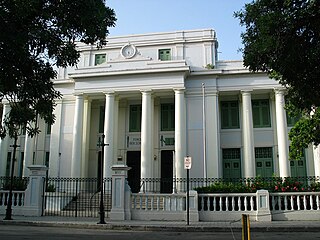
The Ponce High School is public educational institution in Ponce, Puerto Rico, offering grades nine through twelve. The school's main building is a historic structure located on Cristina Street, in the Ponce Historic Zone. From its beginning the school has secured a unique place in Puerto Rico's educational history. Of over 3,000 schools erected in Puerto Rico in the first quarter of the twentieth century, Ponce High was the largest, "at a time enrolling more students than all the other Puerto Rico high schools combined", and for many years enrolling more students than any other high school in Puerto Rico. The cost of the building in 1915 dollars was $150,000 USD. The building was listed on the U.S. National Register of Historic Places on 4 August 1987. The school has the only diamond-level DECA chapter in Puerto Rico. The Ponce High School building is "among the most important public buildings ever built in Puerto Rico." The school is the oldest continuously-operating high school in Puerto Rico.
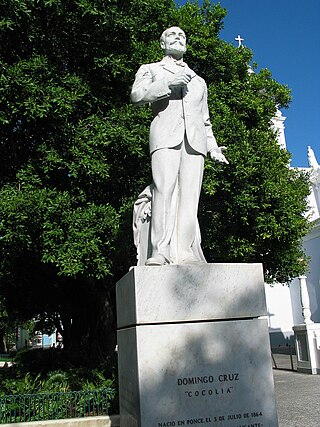
Domingo Cruz, a.k.a., "Cocolía", was a late 19th-century Puerto Rican musician, and director of the Ponce Firefighters' Band.

The Ponce Municipal Band, also known as Centenaria Banda Municipal de Ponce, is the band of the municipality of Ponce, Puerto Rico. The band is the oldest continuously-performing band in the Caribbean and the oldest music group in Puerto Rico. It has performed its open-air concerts for over 125 years. The current director is Juan García Germaín. It has 42 members between 25 and 83 years old. It operates within the jurisdiction of the Oficina de Desarrollo Cultural of the autonomous municipality of Ponce. Its headquarters are located at the Centro Integrado para el Fortalecimiento de las Artes Musicales, next to Teatro La Perla.

The Ponce Municipal Library, formally, Biblioteca Municipal Mariana Suárez de Longo, and also known as Biblioteca Publica de Ponce, is the library system of the municipality of Ponce, Puerto Rico. Founded in 1870, it is the oldest public library in Puerto Rico. The system has its main library on Miguel Pou Boulevard, in barrio San Antón, in the city of Ponce, and seven satellite library branches, three in the city's urban area and four spread out in the municipality's rural areas. The main library inaugurated a new building on Bulevar Miguel Pou in August 2007, where the former Puerto Rico District Court building was located. The central library building on Bulevar Miguel Pou was designed by Ponce architect Juan Dalmau Sambolín.
Félix Saurí Vivas, also known as Félix Saurí y Vivas, was a Spanish-Puerto Rican businessman and interim Mayor of Ponce, from 13 May 1895 to 11 July 1895.
Jaime Leopoldo Drew Henriquez was an early twentieth-century Puerto Rican educator, civil servant, writer and engineer from Ponce, Puerto Rico.
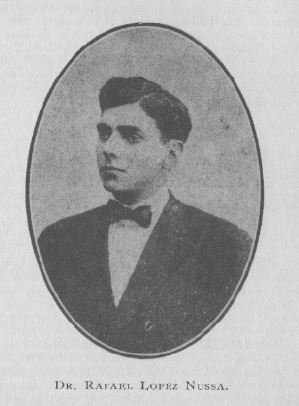
Rafael López Nussa was a Puerto Rican physician and public servant. In 1916 López Nussa performed the first heart surgery operation in Puerto Rico.

The Centro Español de Ponce is a historic structure located in Ponce, Puerto Rico, dating to the early twentieth century and which served as the last headquarters of the Centro Español de Ponce, a Spanish heritage club. The structure is prominent among other Neoclassical architecture in Ponce because it is the first structure in Ponce built in that architectural style for use as a residence but then subsequently used as the headquarters of a prominent community-based civic organization, the Centro Español de Ponce, a Spanish heritage club.
Lizzie Graham was a late 19th-century Puerto Rican soprano singer from Ponce, Puerto Rico.
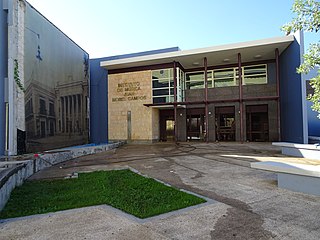
Instituto de Música Juan Morel Campos, formerly known as Escuela Libre de Música de Ponce, is a musical arts institution in Ponce, Puerto Rico. It is an institution of the Ponce Municipal Government. Its first director was Librado Net Pérez. The building had been the former location of the Ponce regional headquarters of Bomberos de Puerto Rico.
Ponce Honra a su Maestra: Lolita Tizol is a marble statue to the memory of Puerto Rican music schoolteacher Lolita Tizol. It is located on Bolevar Miguel Pou, at the fork of Isabel and Lolita Tizol streets, in Ponce, Puerto Rico. The statue has abundant visibility as it is located in an open area of Tricentennial Park.

Domingo Cruz (Cocolía) is a statue to the memory of the Puerto Rican musician and Ponce Municipal Band director Domingo Cruz (Cocolía). It is located at Plaza Degetau in Ponce, Puerto Rico. The marble statue also has a marble pedestal.
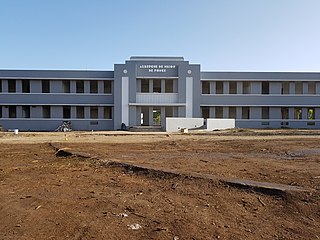
Albergue de Niños de Ponce was a shelter for orphan boys originally located in Barrio Canas Urbano in Ponce, Puerto Rico, and later moving to permanent quarters in Barrio Canas, also in Ponce. The not-for-profit shelter operated from 1931 to around 1985.

Partido was a Spanish colonial term that referred to a governed local administrative region, roughly equivalent to today's municipality in terms of rural land areas included, and used in the Spanish colonies in the Americas during the times of the Spanish Empire. It was "the territory or district composed of a jurisdiction or administration from a main city."
Luis Nicolás Fortuño Janeiro was a politician, historian, journalist, and businessman from Ponce, Puerto Rico. He was senator from Ponce from 1937 to 1941.














